HAYSTACKS across the country have gone from overflowing, after two bumper haymaking seasons, to completely depleted in a matter of months. The widespread drought across NSW and Queensland has meant farmers have been scrambling to buy in fodder to feed stock, and ordinary Australians have rallied behind the call for help by donating hay. But, there’s basically no hay supply left and what is around has almost doubled in price.
It’s not all doom and gloom, however, with some areas getting ready to make hay in the coming weeks and other areas with failed crops planning to cut them for hay. Tim Ford, managing director of Feed Central, an online buying and selling feed platform, says there’s a very severe fodder shortage and while farmers are chasing feed for livestock, nothing can be supplied.
RELATED STORIES:
- "If you don't think drought is part of farming, you're in the wrong game"
- Tough lessons learnt: building resilience to drought
- Drought: “We’ll get through this”
Tim says prices have risen dramatically [as of mid-September]. For example, he says lucerne hay costs about $800 per tonne, delivered to NSW, which is at least double what it was three to six months ago.
“I’ve never seen it like this. The extra demand in NSW means it has been responsible for draining most of the country of hay,” Tim says, adding that the situation occurred despite many farmers being well organised with their fodder reserves.
Looking ahead, he expects there will be some hay cut in the southern Riverina and in Victoria, while areas with failed cereal and canola crops will be able to cut them for hay. “We hope to see a reasonable volume come back on to the market so prices come back,” Tim says.
“I recommend if farmers have the capacity to make hay, they replenish sheds and sell some later. If everyone sells straight off the paddock, prices will be lower and it’ll be a logistical nightmare.”
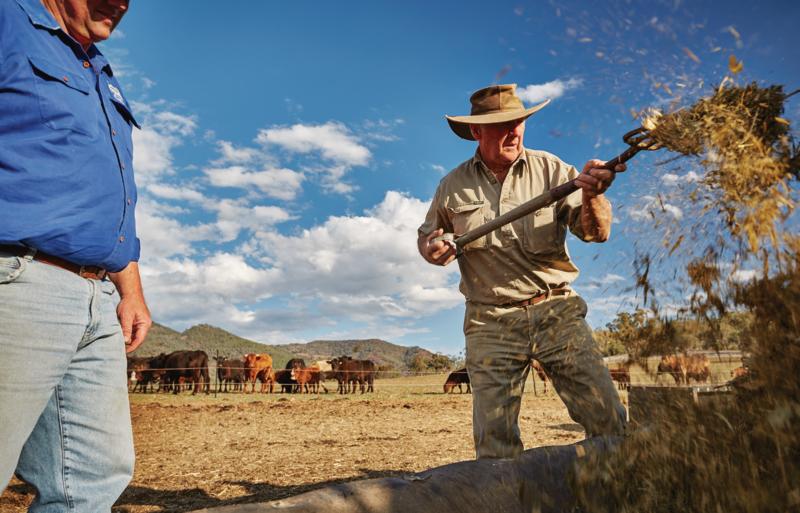 Don Woods (and son Scott) distribute bulk forage sorghum from their silage trench into the cattle feed troughs at “Woodsvale”, Kootingal NSW.
Don Woods (and son Scott) distribute bulk forage sorghum from their silage trench into the cattle feed troughs at “Woodsvale”, Kootingal NSW.
RELATED STORIES:
-
Diversifying from beef to hay production
-
Donated hay survey: where drought-affected farmers found relief
-
26 year old silage offers drought relief for Tamworth farmer
Australian Fodder Industry Association (AFIA) chief executive John McKew agrees the lack of fodder is unprecedented. “Earlier this year I was lamenting the oversupply after a robust harvest in 2015 and 2017,” he says. “The drought has cleared out two seasons’ worth of carryover stock but there still hasn’t been enough to supply drought-ravaged areas of the country.”
HAY TRANSPORT ACROSS BORDERS - BIOSECURITY CONCERNS
While John says he has heard stories of “opportunistic” prices, he hasn’t seen any evidence and sees the price rise that has occurred as “pure economics of supply and demand”. Good quality cereal hay is making $350 to $400 per tonne, although John says it’s hard to find any supply. And with hay crossing state borders, biosecurity could be a concern.
“People should take a bit of care and consider what they’re buying as well as have an understanding of the quality.”
Some are arguing hay exports should be redirected to drought-stricken farmers, however John says this is an oversimplification. The export fodder industry has already been releasing hay to the domestic market if it doesn’t make export grade.
“The export hay industry has taken 30 years to develop and a significant amount of investment to build it to the 1.2 million tonnes exported in 2017,” he says. “You can’t just turn export markets on and off. It’s a very dangerous thing to do, because at some point we will be back with good supply and what would we do with surplus hay then?”
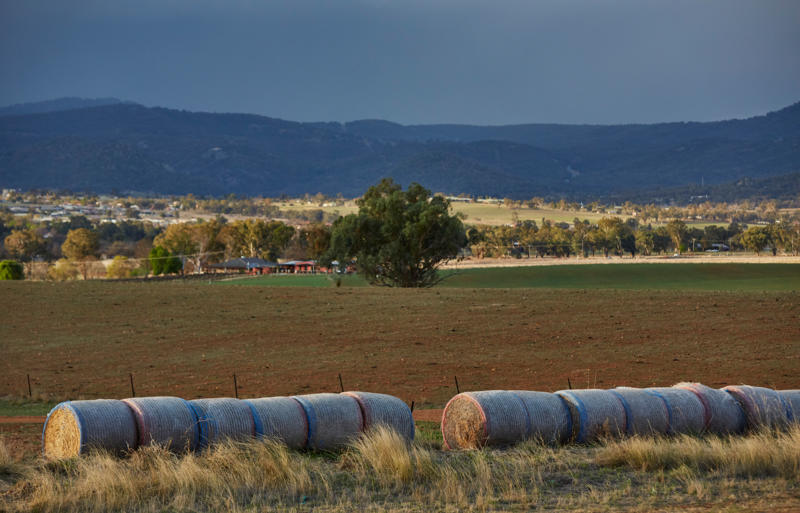 Hay bales at “Woodsvale”, Kootingal NSW.
Hay bales at “Woodsvale”, Kootingal NSW.
THE BUSINESS OF EXPORTING HAY
NSW Farmers’ policy director - rural affairs, and business, economics and trade Kathy Rankin says it’s important to remember there are legitimate commercial businesses involved in exporting hay, which support the farmers who make it and provide jobs for people in regional areas.
“Keeping hay from the export market is not good for agriculture in Australia as a whole. There has been a lot of investment and research from farmers and exporters to build a high quality reputation in markets like China,” she says.
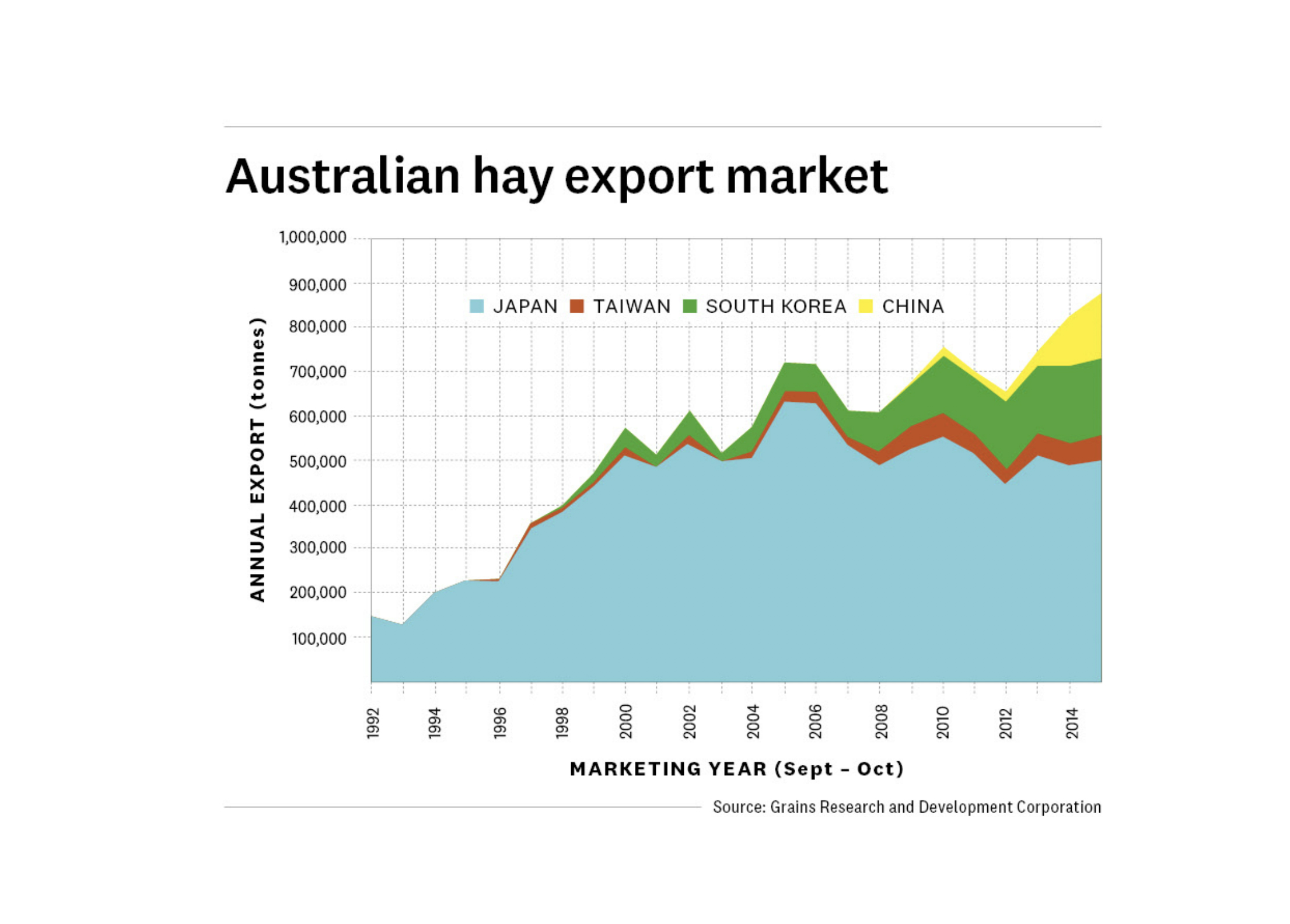
One of those businesses is Balco Australia, a South Australia-based firm that is one of the country’s leading hay processors and exporters. Balco’s technical services manager and 25-year industry veteran Pat Guerin says China has driven a spike in hay exports in the past six years. “This current growth curve mirrors the increase in demand we had in the mid-1990s from Japan,” he says. “The demand from China is brilliant for the industry and farmers because it has kept the pricing structure balanced.”
“Japan is still the dominant buyer, followed closely by China. South Korea has become a significant market and there is plenty of excitement about prospects in the Middle East. “In the past five years, returns for growers have varied from $100 to $240 per tonne depending on the grade, with grading based on feed test analysis and visual characteristics.”
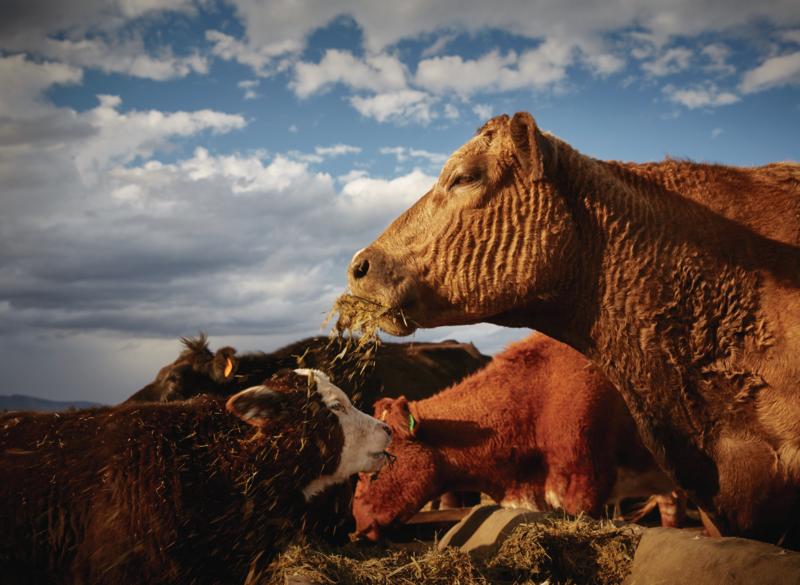 Angus and Short Horn cattle feed on the forage sorghum collected from the silage trench at “Woodsvale”, Kootingal NSW.
Angus and Short Horn cattle feed on the forage sorghum collected from the silage trench at “Woodsvale”, Kootingal NSW.
He says hay farmers in SA and Western Australia focus on supplying pre-harvest export contracts because domestic demand in these states is usually minimal. Oaten hay makes up 90% of the export supply, with the remainder made up of wheat and barley hay and cereal straw hay. Pat says biosecurity is paramount for hay exporters and the industry and farmers have adopted one of the world’s first paddocks-to-customer traceability systems.
Despite dry conditions and frost decreasing yields in many parts of Victoria and SA, he believes the industry has a positive future and room to expand. “Only small tonnages are exported from southern NSW via the Melbourne port at this stage, but there is potential for it to increase as our export markets expand.”
“We are only accredited to export oaten hay to China, which has taken around 300,000 tonnes in the past 12 months, mainly for use in their growing dairy industry,” Pat explains. “The typical dairy herd size over there is 10,000 and they demand consistent quality.”
TRANSPORTING HAY: A COMMONSENSE APPROACH
Cattle farmer Angus Atkinson with hay truck, Coonabarabran NSW.
Getting hay to where it is needed the most is now easier. As of 20 September, longer and higher hay loads on trucks will be allowed on state roads nationally to take animal feed to farmers. Previous laws meant larger heavy vehicles needed a permit on state-controlled roads. But now, the maximum size of vehicle exempt from applying for a permit will be 4.6m high and 2.83m wide.
Previously, access was limited to Class 3 vehicles up to 4.3m high and 2.6m wide. Shortages of animal feed has meant trucks have been carting fodder across the country from Western Australia and Tasmania bound mainly for rural NSW.
Announcing the change, Prime Minister Scott Morrison said some trucks had previously been stopped by authorities at state borders for carting large loads of hay without permits. “One commonsense thing we need to do is make sure when you’re driving a truck full of hay, they don’t stop it at the border because it doesn’t comply with some rule that frankly doesn’t need to be there, particularly in circumstances like this,” he said.
“One of the things we’ve identified early is the need for these trucks, large trucks, carrying the hay, to move past state borders and not be pulled up, not be fined.” The government estimates the change will remove the need for up to 6,000 consents a year, saving up to 54,000 days per year spent applying and waiting for permits."
SAFE DROUGHT FEED ALTERNATIVES
Cottonseed, almond and peanut hulls, grape marc and sugar cane mulch are some of the supplementary feed alternatives farmers are turning to in drought.
But are they safe and effective?
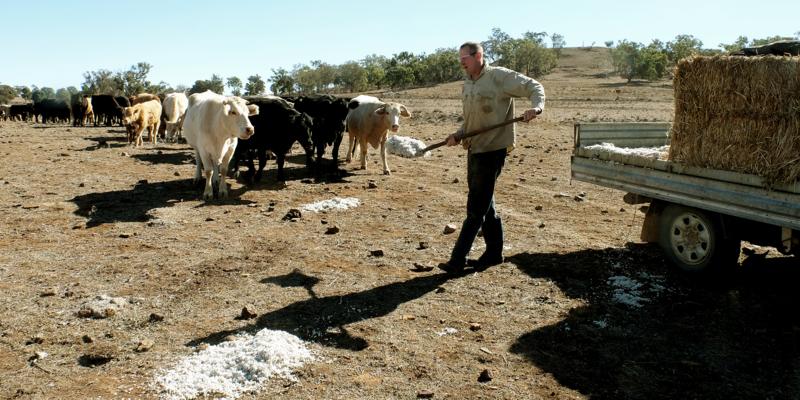 Angus Atkinson feeds cottonseed to stock in Coonabarabran.
Angus Atkinson feeds cottonseed to stock in Coonabarabran.
The NSW Department of Primary Industries’ (DPI) livestock research officer John Piltz says the only way to tell the quality of the feed, whether it’s hay or an alternative, is to get it tested. The important factors in determining feed quality are: metabolisable energy (ME) – the estimated energy available to an animal from digesting the feed; crude protein content (balanced with ME); dry-matter content; and vitamin and mineral requirements.
“Metabolisable energy is the most important indicator of feed quality as it provides energy to the animal for maintenance, heat production and output production, such as milk or wool,” John says.
Results from DPI feed quality tests show:
● The ME of 2017 cereal hay ranged from 8.2-11.8 megajoules per kilogram of dry matter (MJ/kg DM).
● The ME of lucerne hay ranged from 6.9-11.4 MJ/kg DM.
● The ME of cottonseed was 2.9-6.3 MJ/kg DM.
● Most grains had a standard range of 12.5-13 MJ/kg DM.
“There is a difference between the lowest and highest metabolisable energy and that can affect how animals perform, so the only real way of knowing is to get a feed test.”
When looking at what to feed, John says the first thing to do is look at what feed resources are available and the amount needed to meet targets.
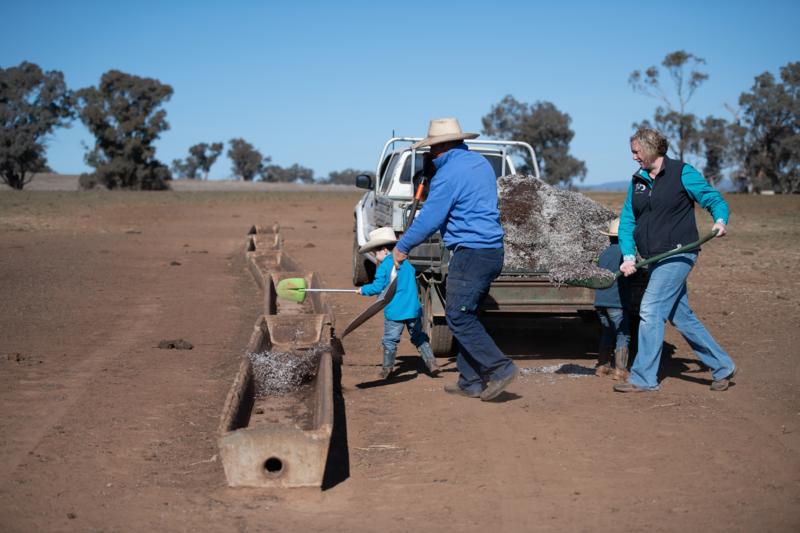 The Dickens family filling feed troughs with a 60:40 mix of cottonseed and grape marc on their sheep and cattle property at Yeoval.
The Dickens family filling feed troughs with a 60:40 mix of cottonseed and grape marc on their sheep and cattle property at Yeoval.
“I’d then suggest purchasing the most economical feed that allows you to get the protein and energy required, but don’t fall into the trap of the cheapest energy is the best.”
Chemical residue is another thing to consider when buying in alternatives. “Chemical residue could be an issue from horticulture crops or cottonseed, so check they won’t harm livestock and consider withholding periods.”
John has heard of some farmers feeding food waste, things like bread and cake mix, but he warns against this.
RELATED:
-
Maggots: The livestock feed no-one saw coming
-
Turning pig waste into renewable energy
“A number of the feeds, especially from the food industry, have high ME contents, probably due to high starch levels. Caution should be exercised as there is a risk of grain poisoning,” he says. “They also have very low fibre content and would need supplementation with roughage to ensure healthy rumen function and for lactating animals to produce milk.”